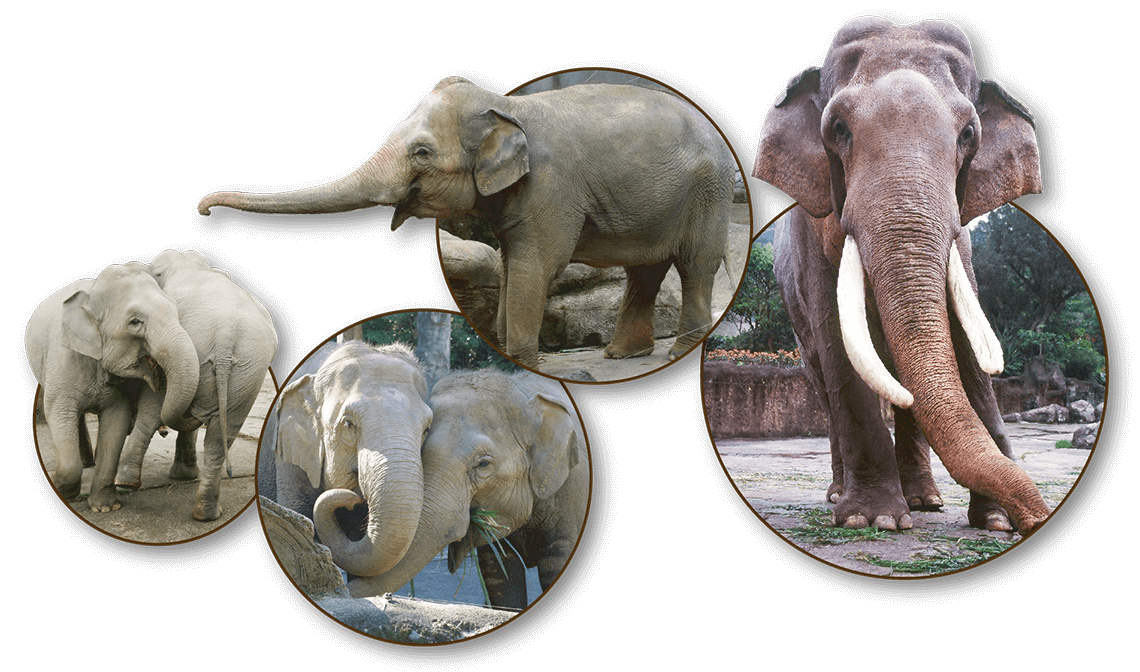誰的足跡?
Whose Footprint?
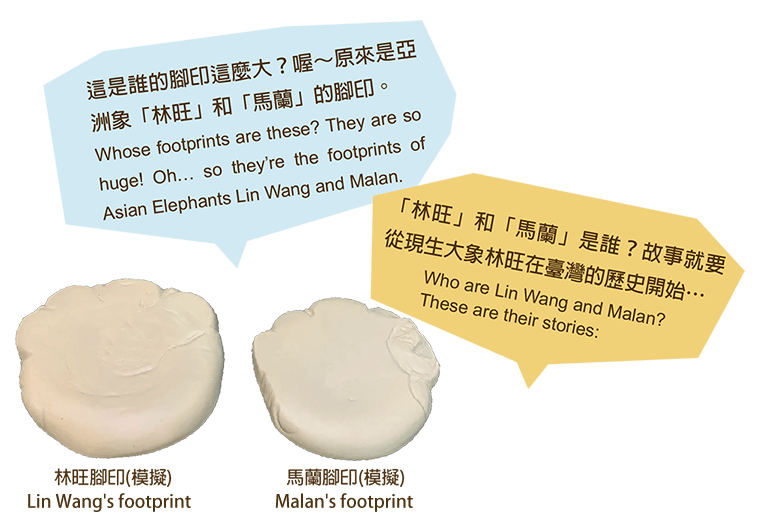
1945年
孫立人將軍率領的新一軍,在反攻緬甸的南坎戰役中,擄獲日軍所屬由13頭大象組成的運輸象隊,其中一隻就是原名為「阿美」的林旺。
The New First Army under General Sun Li-jen captured a Japanese elephant transport team consisting of 13 elephants during the Battle of Nankan in the Burma campaign. Among the elephants captured, one of them was Lin Wang, whose original name was Amei.

1946年
對日抗戰勝利,包括林旺在內的7隻象被送到廣州後,其中4隻送往各地的動物園,林旺和其他兩隻大象則留在廣州中央公園供民眾觀賞。
Victory in the Second Sino-Japanese War. After 7 of the captured elephants – including Lin Wang – were shipped to Guangzhou, 4 of them were relocated to zoos elsewhere, while Lin Wang and 2 other elephants remained at Guangzhou Central Park for public viewing.
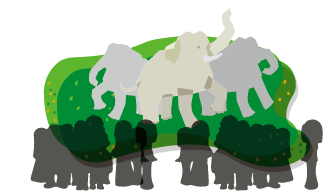
1947年
被送到廣州的象中有一隻死亡,孫立人派人將林旺與另一頭年輕象「阿沛」,搭著「海基號」經海路運送到高雄鳳山的陸軍訓練部。
One of the elephants shipped to Guangzhou died. Sun Li-jen assigned his men to bring Lin Wang and another young male elephant named Apei onboard the ship Haijihao to the Army Training Command in Fongshan, Kaohsiung.

1951年
與林旺同時到鳳山的阿沛病逝,只剩林旺這頭大象。
Apei, the male elephant who arrived in Fongshan at the same time as Lin Wang, succumbed to its illness. Only the elephant Lin Wang remained among the captured elephants.

1952年
四歲的馬蘭來到圓山動物園。
The 4-year-old female elephant Malan arrived at Yuanshan Zoo.
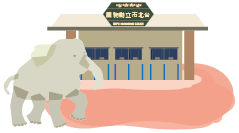
1954年
由臺北市長吳三連先生牽紅線,將林旺與圓山動物園的母象「馬蘭」配對。同年10月30日,林旺從鳳山遷入圓山動物園。(臺北市立動物園當時位址於臺北圓山)
With Taipei Mayor Wu San-lien taking on the role of the matchmaker, Lin Wang was officially pronounced the spouse of Yuanshan Zoo’s female elephant Malan. Lin Wang was relocated from Fongshan to Yuanshan Zoo on October 30 of the same year (At that time, Taipei Zoo was located at Yuanshan).
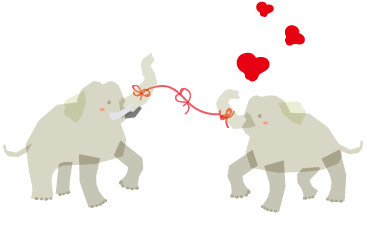
1967年
保育員在林旺的糞便中發現血絲,經診斷為直腸長瘤,由於情況越來越嚴重,決定為林旺動手術,不過當時醫療技術很落後,只好把林旺五花大綁,再把手術工具直接插入患部電療及上藥,林旺經過此事以後,對保育員及獸醫的態度轉變,不如以往溫馴順從。
Zoo keepers found traces of blood inside the excrements of Lin Wang. After examination, Lin Wang was diagnosed with colon tumor. As the elephant’s physical condition worsened, the keepers at the zoo decided to carry out an operation on Lin Wang. However, as medical technology of the era was not as advanced as today, the keepers had to tie up and bind Lin Wang before surgery tools were directly inserted into the elephant’s body to conduct electrotherapy and applying medication. After this horrifying incident, Lin Wang’s attitude towards zoo keeper and veterinarians drastically changed and was not as docile and obedient as before.

1977年
動物園擴建象舍,林旺去除腳鍊。(每年11月到隔年4月為林旺狂暴期,為防範傷及保育員和馬蘭,會為林旺的腳扣上鐵環)
Taipei Zoo expanded the size of its elephant housing facility. Lin Wang’s foot shackles were removed (Lin Wang’s musth typically lasted from November through April. To prevent the elephant from harming zoo personnel and Malan, iron shackles were attached to Lin Wang’s legs).

1983年
動物園第一次為當時66歲的林旺舉辦慶生會,從此之後每年都辦慶生會。
The then-66-year-old Lin Wang enjoyed his first birthday party organized by Taipei Zoo. Each year afterwards, the zoo organizes events on an annual basis to celebrate the elephant’s birthday.

1986年
動物園從圓山遷至木柵,為了幫林旺和馬蘭搬家,改裝大型貨櫃,並費了九牛二虎之力才將林旺與馬蘭帶入貨櫃,搬至木柵的新家白宮。(搬運林旺時的貨櫃,目前放置在熱帶雨林區出口)
Taipei Zoo was relocated from Yuanshan to its present-day location in Muzha. To help Lin Wang and Malan move, Taipei Zoo remodeled shipping containers for the purpose of transporting the couple. Zoo staff were finally able to lure both Lin Wang and Malan into the containers after much effort, moving them to their new home “White House” in Muzha (the shipping container used for moving Lin Wang is currently displayed at the exit of Tropical Rainforest Area in the zoo).

1997年
林旺狂暴期間,憤怒地追逐馬蘭,迫使馬蘭跨越一公尺高的矮牆逃到展示區外。
During Lin Wang’s musth, he chased after Malan in a fit of rage, forcing Malan to jump over low walls measuring 1 meter in height and fleeing beyond the parameters of the exhibition area.

一次意外撞傷造成馬蘭右前腳外側指甲破裂且受傷,經過幾個月的治療始終沒康復,此外,馬蘭陸續出現牙痛、陰部發炎、消化不良等症狀。
An accident caused Malan’s nail on her right forefoot to rupture. Despite several months of treatment, her wounds failed to heal. Furthermore, Malan also began showing symptoms including toothache, genital inflammation, and indigestion.
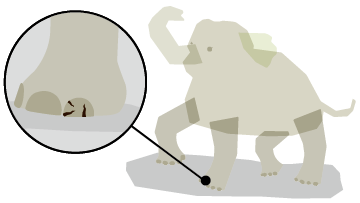
2000年
動物園為馬蘭腳疾進行手術,創下國內大型動物麻醉的首例。
Taipei Zoo conducted an operation in an effort to treat Malan’s foot woes. It is the first operation in Taiwan to perform anesthesia on large mammals.
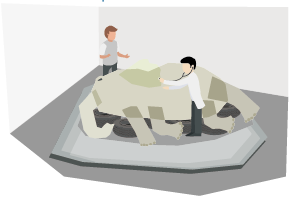
2002年10月
馬蘭因長年腳疾不支倒地,死因為惡性纖維肉瘤且轉移至淋巴結及肺臟。
After suffering many years from her foot illness, Malan collapsed and died from fibrosarcoma.
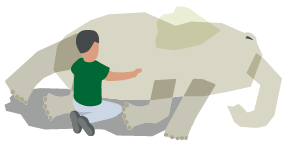
2003年
保育員發現林旺因退化性關節炎導致右後腳無力,經常泡在水池中,同年2月26日,林旺因休克病逝,享年86歲。
Zoo keepers found that Lin Wang was unable to exert any strength upon his right foot due to osteoarthritis. He spent long parts of his days inside the pond. On February 26, Lin Wang passed away after experiencing circulatory shock. He was 86 years old.

延伸小知識 Extended knowledge

大象走路的時候,腳的位置是直著一前一後,不是兩腳打開平行走。
When elephants walk, the position of their feet involves the forefoot and hindfoot moving in a straight line. They do not walk with both feet moving in parallels.
象跡比一比
Comparing Elephants
林旺和馬蘭過世前住在動物園熱帶雨林區域的亞洲象區,同一區還住著友信及友愷兩頭母象,在動物園的非洲區域是非洲象千惠和美代(已過世的藍波及百代也是非洲象)。
Before Lin Wang and Malan passed away, they resided in the Asian Elephant Section at the zoo’s Asian Tropical Rainforest Area. Two other female elephants were also housed in the section – Youxin and Youkai. There are also elephants living in the African Animal Area of Taipei Zoo – the African elephants Chie and Miyo (the deceased Rambo and Baidai were African elephants as well).
依分布地理位置,象類約略分為亞洲象和非洲象。
推估最早在6千萬年前,第一個大象成員始祖象出現在地球上,歷經氣候變遷與環境改變,過去推估地球上曾有200多種成員陸續登場及退場(種類數量會隨著化石不斷出土及分類的變動而改變),直到現在僅存亞洲象及非洲象了。
Based on the geographic distribution of the species, elephants can be divided into Asian elephants and African elephants. It is estimated that the earliest elephants came to existence around 60 million years ago. Moerritherium – the first member of the elephant family – first appeared on earth. After weathering years of climate and environmental changes, the members of the elephant family experienced countless evolution and extinction. With over 200 different species and subspecies appearing and disappearing over the years, only two members of the elephant family remain today – the Asian elephants and African elephants.
動物園的象家庭
The Elephant Family in the Zoo
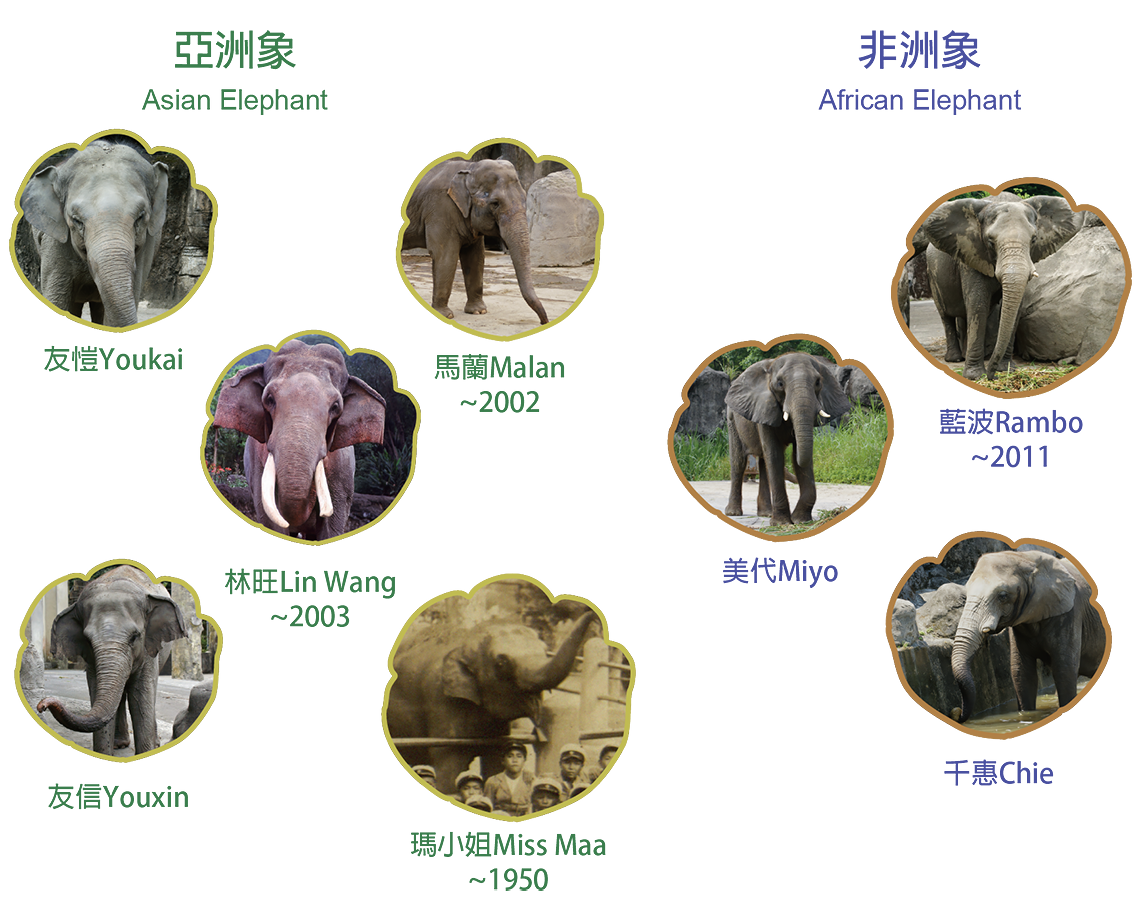
非洲象 African Elephant
非洲象近代形態及基因研究傾向將非洲象再細分為2種:森林象及草原象,(或更多亞種如西非象等West African form,目前尚在等待足夠證據支持)。草原象即一般我們常見的非洲象,是現存世界上最大的陸地動物。
森林象則體色較深、體型較小,肩高1.6~2.8公尺,體重約2.7~6公噸不等,由於牠們的耳朵較小較圓,所以又稱圓耳象,下頜骨長而窄,前腳有5趾甲,後腳有4趾甲,象牙小而直,質地更硬。主要棲息在中、西非的熱帶叢林區。
There are two species of African elephant currently. Recent research in genes divided African elephants into savannah elephant and forest elephant, even a third subspecies (the West African form). The new classification is still gathering support as more evidences came to surface. What we commonly refer to as African elephants are usually the savannah elephants. It is the largest terrestrial animal in existence today.
Forest elephants, on the other hand, are darker in color, smaller at the body. They stand 1.6~2.8 meters in height, ground to shoulder. They weight 2.7~6 tons. Because their ears are smaller in size and rounder in shape, they are also called round-eared elephants. Their lower jaws are long and narrow; they have 5 nail-like structure in the front feet, 4 nail-like structure in the hind feet. Their tusks are smaller but straighter, harder in texture. They mostly live in the tropical forests of central and western Africa.
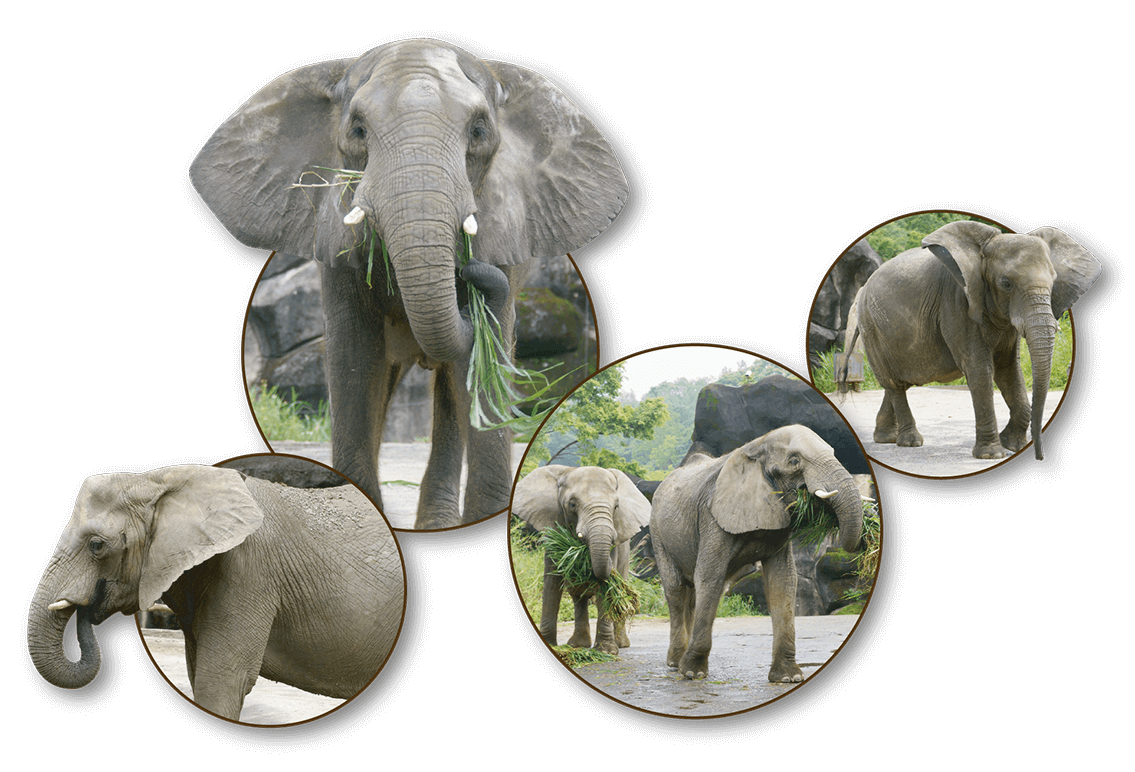
非洲象(草原象) African Elephant, Savannah
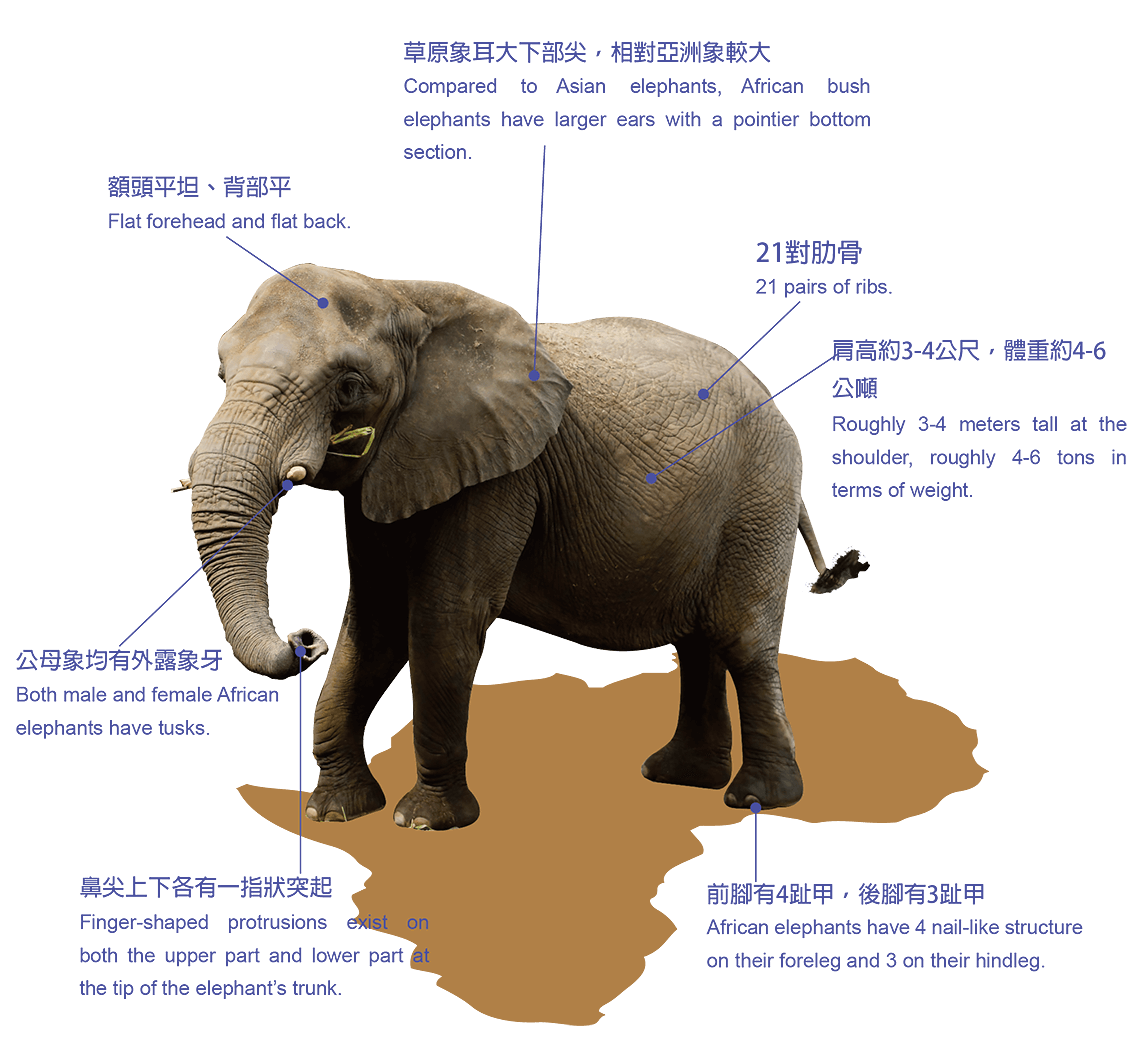
分布:剛果、加彭、波札那、肯亞、坦尚尼亞
環境:森林、草原、沼澤、灌木林、乾燥半沙漠型灌木林
Distribution: Congo, Gabon, Botswana, Kenya, Tanzania
Habitat: Forest, grassland, marsh, bushland, dry semi-arid bushland
亞洲象 Asian Elephant
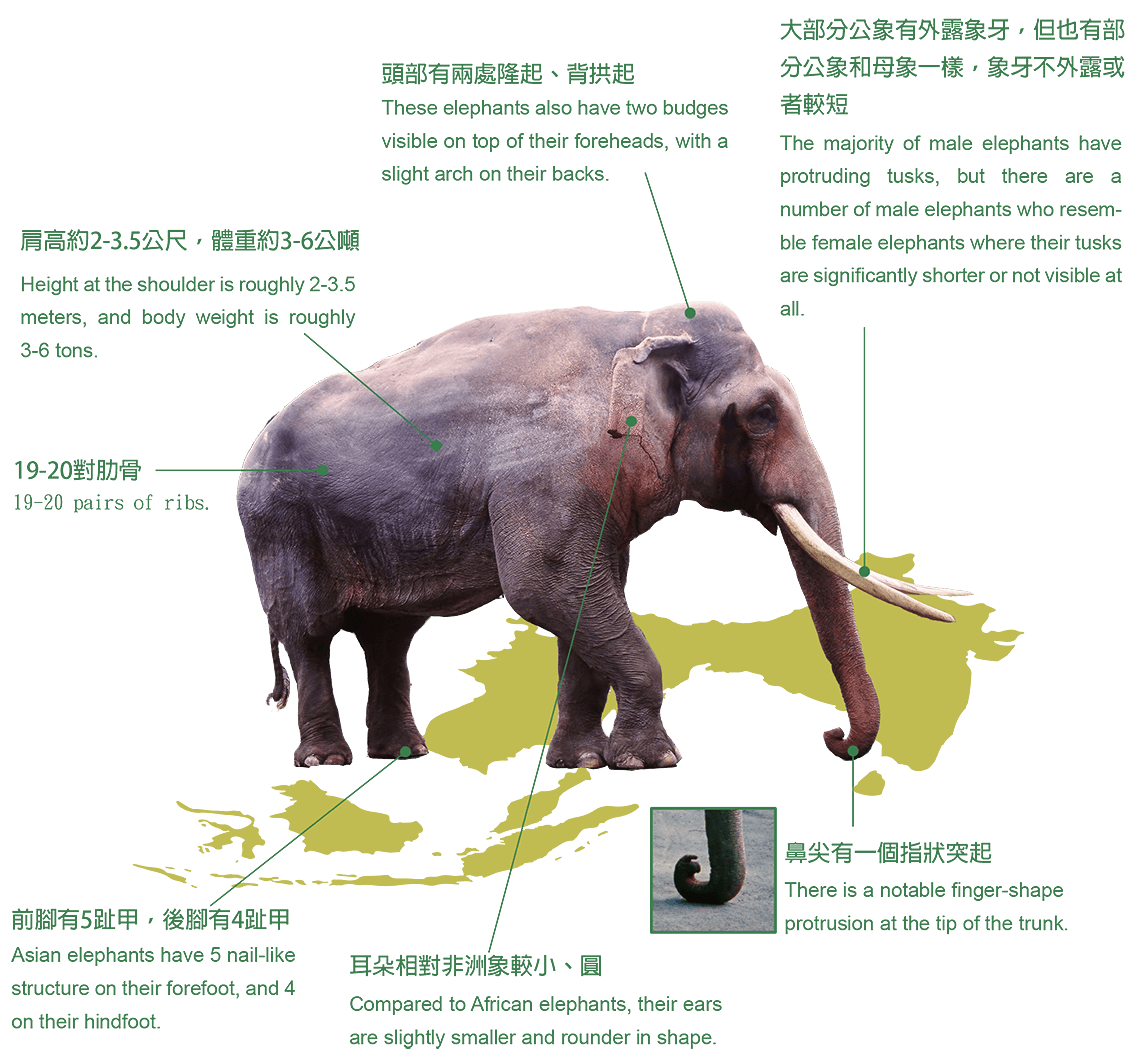
分布:印度、尼泊爾、斯里蘭卡、泰國、緬甸、 越南、印尼、馬來西亞及中國雲南等地
環境:濃密樹林至草原地帶
Distribution: India, Nepal, Sri Lanka, Thailand, Myanmar, Vietnam, Indonesia, Malaysia, and China's Yunnan.
Habitat: Dense forest or grassland.
亞洲象 Asian Elephant
亞洲象只有一種且一般認為有三個亞種:印度象、亞洲象和蘇門答臘象(E.m.indicus(Indian elephant), E.m.maximus (Sri Lankan elephant), and E.m.sumatranus (Sumatran elephant)),但充其量只是在體型大小和些微顏色上的差異而已。其中婆羅洲矮象最初也被歸類在印度象或蘇門答臘象中,直到2003年時被認為應該是亞洲象的一個獨立亞種。英文名原來稱為Pygmy Elephant,但是由於牠們並不像侏儒河馬或人類的侏儒那樣帶有侏儒基因,所以最多只能稱牠們為矮象。婆羅洲矮象個頭比一般亞洲象稍微小一點,母象最多大概小20%、耳朵大一點點、牙齒直一點,尾巴比其他亞洲象身體比較相對比例長很多,腳趾數量和亞洲象一樣,主要分布於婆羅洲島北部的沙巴州,目前只剩下約1,500頭左右,是非常需要保護的瀕危物種。
There is only one species of Asian elephant. It has been commonly agreed that there are 3 subspecies: Indian elephant (E.m. indicus), Sri Lankan elephant (E.m.maximus) and Sumatran elephants (E.m. sumatranus). However, their differences are only in body sizes and minor variances in color. In 2003, Borneo elephants became recognized as the 4th subspecies among Asian elephants. They were previously classified as either Indian or Sumatran elephants. Although Borneo elephants were also called pygmy elephants, they do not carry dwarfism genes in the manner pygmy hippopotamus and human dwarfs do. Their heads only slightly smaller compared to the other Asian elephants. The females are at most 20% smaller in the head, while their ears are slightly larger and teeth are straighter. Their tails are much longer, proportionally compared to other subspecies. They have the same number of toes as other Asian elephants. They are mostly found in the Sabah region of Borneo Island. Currently, there are only 1500 Borneo elephants remaining in the wild. They are in dire need for protections.
